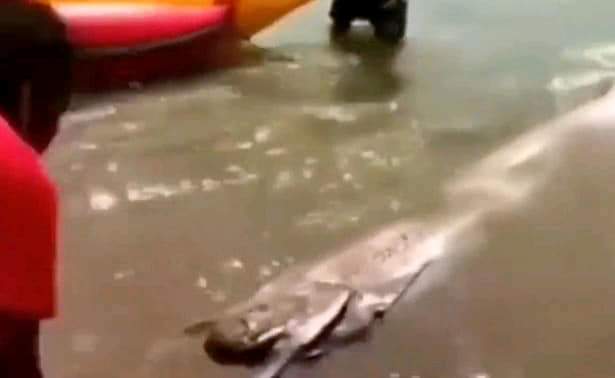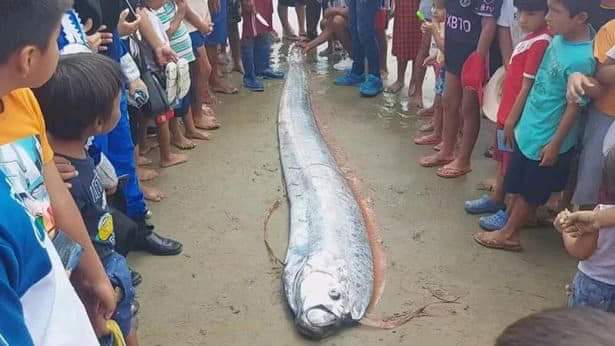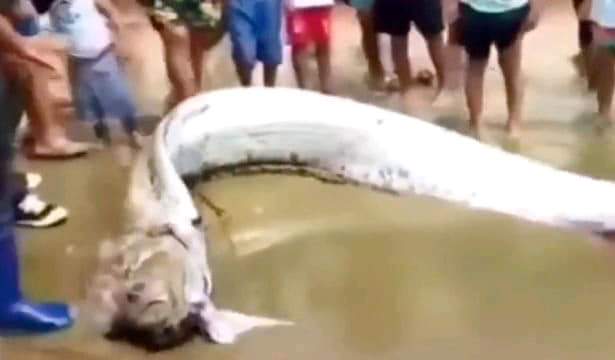BEACH goers panicked after a huge fish – believed to have appeared from the sea when an earthquake was looming – washed up on the sand yesterday. The enormous deep-sea oarfish – which measured 13 feet (4 metres) in length – is dubbed a “harbinger of doom” for its links to disasters.
It was still alive when beachgoers tried to help it back out to sea but desperately tried to breathe through its gills. Despite the best efforts of locals, it died on the shore of Cancas Beach in Punta Sal, Peru.
Other residents were too worried to stay on the beach, though, as they feared an earthquake was to strike within minutes. Nothing has happened in Peru yet but, on occasions, quakes have occurred days after sightings of oarfish.

One resident told local media: “We noticed that it was beaching here on the shore. The fishermen here were not afraid to touch it and tried to return it to the sea. However, it was destined to die.”
Images show two men dragging the long fish back into the water in front of a large group of onlookers, including dozens of children. The video went viral with 129,100 views and dozens of comments.
One viewer commented: “It has already been reported that catastrophes occur during these times and many of us will suffer as a result.”
Another said: “Oarfish are synonymous with earthquakes and tsunamis. You have to ponder after that last tremor on the Salvadoran coast.” A third wrote: “Another oarfish of earthquakes?”
One man remarked: “It does not mean a catastrophe is coming. They are deep-sea fish that, if they are injured or about to die, come to the shore.”
Fishermen said it was the second oarfish they have encountered on the beach in recent months. An oarfish washed up on the beach during Cyclone Yaku in March this year.
Due to their size and shape, oarfish resemble “sea serpents” and are considered harbingers of earthquakes and misfortune in Japanese mythology. The myth was rekindled in 2011 after the Tōhoku earthquake and tsunami.
Shortly before the disaster, at least a dozen of the rarely-seen fish washed ashore in Japan in late 2009 and 2010. Despite their links to natural disasters, the Ecuadoran Geophysical Institute said the myth has no validity in any scientific study carried out as of August 2022.
Source: Mirror
Eighteen-Eleven Media


